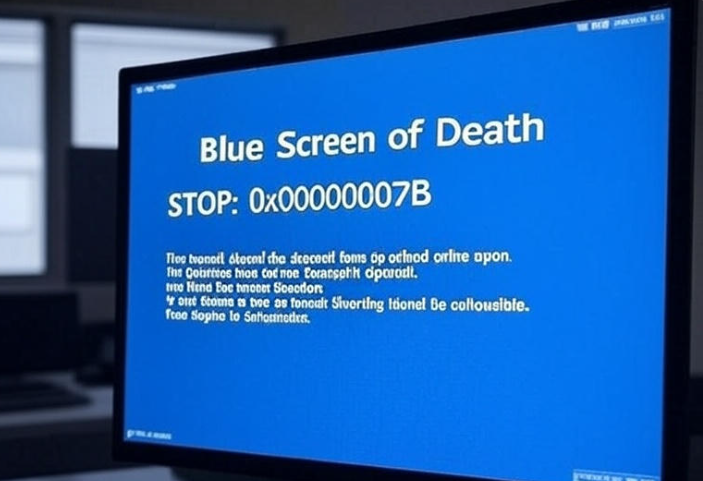Picture this: you’re scrolling through your favorite social media app, casually viewing photos, when suddenly your iPhone becomes a gateway for hackers. Sounds like something from a sci-fi movie? Unfortunately, this nightmare scenario just became reality for millions of Apple users worldwide.
Apple just dropped an emergency security update that’s got cybersecurity experts burning the midnight oil. We’re talking about a vulnerability so serious that it’s already being exploited by attackers in what Apple calls “extremely sophisticated” operations. If you haven’t updated your Apple devices yet, you’re essentially walking around with a digital target painted on your back.
What Makes This Attack So Dangerous?
The vulnerability, officially labeled CVE-2025-43300, is a zero-day flaw with a CVSS score of 8.8 – that’s dangerously close to the maximum severity rating. What makes it particularly nasty is that it hides in Apple’s ImageIO framework, the system that processes images across all Apple devices.
Think about how many images you encounter daily. Every photo you open, every picture message you receive, every image on a website – they all get processed through this framework. Now imagine that any one of these innocent-looking images could be a weapon designed to take control of your device.
Here’s what’s really scary: attackers can construct a malicious image that, when processed by your device, causes memory corruption. This isn’t just about crashing your phone – skilled attackers can manipulate this corruption to run their own code with elevated permissions.
The Domino Effect That Should Worry Everyone
Cybersecurity experts are particularly concerned about what they call the “trickle-down effect.” While this vulnerability is currently being used in highly targeted attacks against specific high-value targets, history shows us that once a patch is released, attackers quickly repurpose the same vulnerability for broader, more opportunistic campaigns targeting everyday users.
This means what starts as sophisticated espionage operations against government officials, business executives, or activists eventually becomes the foundation for mass attacks against regular folks like you and me. The hackers essentially reverse-engineer Apple’s patch to understand exactly how the vulnerability works, then weaponize that knowledge against a much larger audience.
It’s like watching a leaked government weapon eventually end up in the hands of common criminals on the street. The same powerful exploit that was once reserved for elite hacking groups becomes available to anyone with basic technical skills and malicious intent.
Every Apple Device Is at Risk
This isn’t a problem affecting just one type of device. Apple has released security updates covering iOS 18.6.2 and iPadOS 18.6.2 for newer devices, iPadOS 17.7.10 for older iPads, and multiple versions of macOS including Sequoia 15.6.1, Sonoma 14.7.8, and Ventura 13.7.8.
The comprehensive nature of these updates tells us everything we need to know about the scope of this vulnerability. When Apple pushes emergency patches across their entire ecosystem simultaneously, you know they’re dealing with something serious.
Your iPhone, iPad, MacBook, iMac – they’re all potentially vulnerable until you install these critical updates. Even if you have an older device, Apple has made sure to include patches for legacy systems, which shows just how seriously they’re taking this threat.
Understanding the Technical Reality
Let’s break down what an “out-of-bounds write vulnerability” actually means in simple terms. Imagine your device’s memory as a series of carefully organized filing cabinets, each with specific drawers designated for different types of information. An out-of-bounds write flaw allows attackers to force programs to write information in the wrong drawer – areas of memory they should never be able to access.
This is incredibly dangerous because attackers can use this access to overwrite critical system information or inject their own malicious code into areas where the system will execute it with high-level permissions. It’s like giving a stranger not just the keys to your house, but also the combination to your safe and the passwords to all your accounts.
In this specific case, the vulnerability allows attackers to corrupt memory by crafting malicious images. When your device tries to process these poisoned images, the corruption can be manipulated to crash processes or, worse, run the attacker’s code with elevated system privileges.
Real-World Attack Scenarios
The practical implications of this vulnerability are genuinely terrifying. Consider these realistic attack scenarios:
Email Attacks: An attacker sends you what appears to be a harmless photo attachment. The moment your email app tries to generate a preview thumbnail, the malicious image triggers the vulnerability, potentially giving attackers full access to your device.
Social Media Exploitation: You’re browsing Instagram, Facebook, or Twitter when you encounter a malicious image in your feed. Simply viewing the image – not even saving or sharing it – could compromise your entire device.
Website-Based Attacks: You visit what seems like a legitimate website, but embedded images contain the exploit code. Your browser’s attempt to display these images could hand over control of your device to attackers.
Messaging Apps: Someone sends you an innocent-looking photo through iMessage, WhatsApp, or any other messaging platform. The automatic image processing that happens when you receive the message could trigger the exploit before you even open the conversation.
The insidious nature of this attack vector is that it doesn’t require any user interaction beyond normal device usage. You don’t need to click suspicious links, download questionable apps, or ignore security warnings. Simply encountering a malicious image during routine device usage is enough to trigger the exploit.
Why Apple’s Response Matters
Apple’s handling of this vulnerability reveals both good news and concerning realities about modern cybersecurity. On the positive side, Apple has acknowledged that this issue may have been exploited and has moved quickly to patch it across all affected platforms. The speed and comprehensiveness of their response shows they’re taking the threat seriously.
However, the fact that this vulnerability was actively exploited before Apple discovered it highlights a fundamental challenge in cybersecurity. Zero-day vulnerabilities, by definition, are unknown to the software vendor, which means there’s always a window of time where users are completely defenseless against these attacks.
What’s particularly concerning is Apple’s description of the attacks as “extremely sophisticated.” This suggests that well-funded, highly skilled threat actors – possibly nation-states or advanced criminal organizations – have been using this vulnerability for some time before it was discovered and patched.
Taking Action: Your Update Checklist
If you’re feeling overwhelmed by the technical details, here’s your straightforward action plan:
For iPhone and iPad Users: Go to Settings > General > Software Update. Make sure you’re running iOS 18.6.2, iPadOS 18.6.2, or iPadOS 17.7.10 for older models. If you see an available update, install it immediately.
Don’t put this off. Don’t wait until tomorrow. Don’t assume you’ll remember to do it later. Every moment your device remains unpatched is another moment you’re vulnerable to attack.
For Mac Users: Click the Apple menu, open System Settings, scroll to General, then select Software Update. Install any available updates, and be prepared for your Mac to restart as part of the installation process.
Enable Automatic Updates: While you’re in the update settings, turn on Automatic Updates if you haven’t already. This ensures you’ll receive critical security patches as soon as Apple releases them.
The Bigger Picture: What This Means for Apple Security
This vulnerability represents the seventh actively exploited zero-day that Apple has addressed recently, according to security researchers. That’s not just a number – it’s a troubling trend that suggests Apple devices are increasingly in the crosshairs of sophisticated attackers.
The frequency of these discoveries raises important questions about the security of Apple’s ecosystem. While Apple has built a reputation for robust security, the reality is that no system is impervious to attack. The company’s closed ecosystem, which has traditionally been a security advantage, may also create a false sense of security among users.
This latest vulnerability also highlights the evolving nature of cyber threats. Modern attacks don’t rely on tricking users into making poor security decisions. Instead, they exploit fundamental flaws in how devices process everyday data like images. This makes them incredibly difficult for average users to detect or prevent.
Looking Forward: What You Need to Know
The cybersecurity landscape is changing rapidly, and this Apple vulnerability is just the latest example of how sophisticated modern attacks have become. As our devices become more integrated into our daily lives, the potential impact of security breaches continues to grow.
Moving forward, consider adopting these security practices:
Stay informed about security updates and install them promptly. Security patches aren’t optional maintenance – they’re essential protection against known threats.
Be cautious about the sources of images and media you encounter, especially in email attachments or from unfamiliar websites. While this vulnerability has been patched, similar flaws may exist and remain undiscovered.
Consider using additional security tools. While Apple’s built-in security features are robust, supplemental protection can provide additional layers of defense against emerging threats.
Regularly backup your important data. Even with the best security measures, breaches can still occur. Having recent backups ensures you can recover from potential attacks without losing critical information.
The Bottom Line
This isn’t just another routine security update – it’s a wake-up call about the realities of modern cybersecurity. The fact that attackers were already exploiting this vulnerability in sophisticated operations should concern every Apple user.
The good news is that Apple has responded quickly with comprehensive patches. The challenging news is that this vulnerability represents a broader trend of increasingly sophisticated attacks targeting fundamental system components.
Your action items are simple but critical: update your devices immediately, enable automatic updates, and stay vigilant about emerging security threats. In today’s digital landscape, your security is only as strong as your most recent patch.
Don’t become a statistic in the next wave of cyberattacks. Take a few minutes right now to check for and install these critical security updates. Your digital safety depends on it, and the attackers aren’t waiting for you to get around to it eventually.
The question isn’t whether you can afford to take the time to update your devices – it’s whether you can afford not to.



